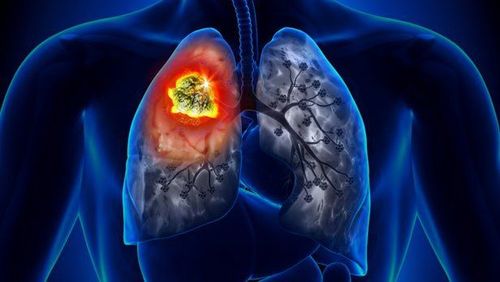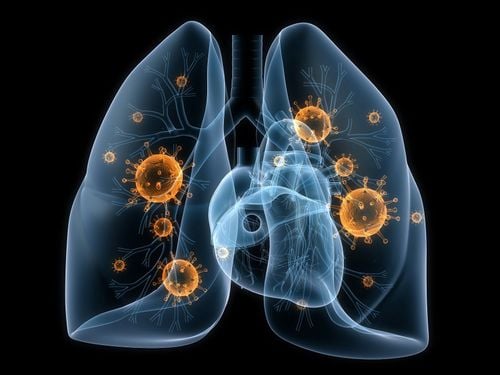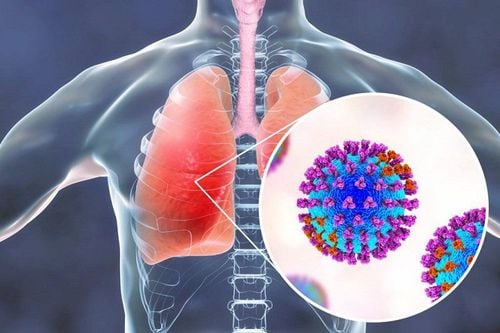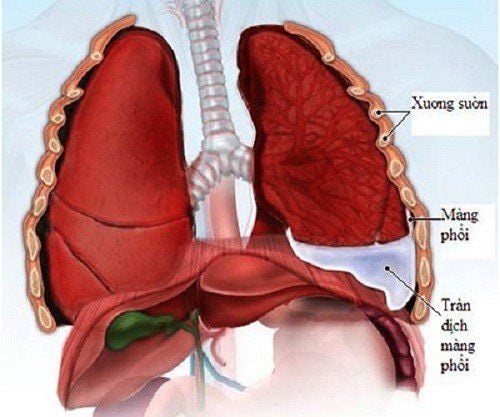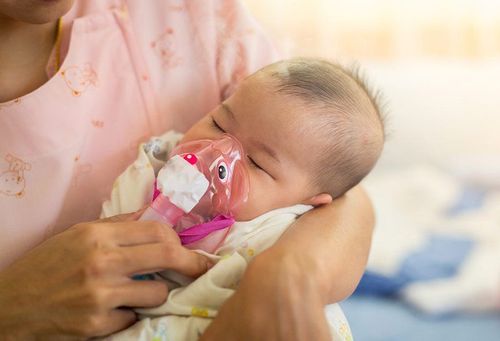This is an automatically translated article.
The article was professionally consulted with Master, Doctor Nguyen Huy Nhat - Respiratory Doctor - Department of Medical Examination & Internal Medicine - Vinmec Danang International General Hospital.When suffering from a mild fever or flu, many people subjectively take the disease lightly or take it through speakers and pills. However, with those symptoms, we should not take it lightly, because it is possible that after being infected with the virus, the patient may have bacterial pneumonia.
1. What is bacterial pneumonia?
Bacterial pneumonia (lung infection) is an infection of the lungs caused by bacteria. Bacteria overcome the body's defense mechanism, through the respiratory tract, blood sugar, bacteria have entered the lungs. In many cases, bacterial pneumonia does not cause many serious complications, but some patients also die from bacterial pneumonia.Some common bacteria that cause bacterial pneumonia are Streptococcus, Mycoplasma, Staphylococcus, Haemophilus, and Legionella.
2. The reason is easy to get bacterial pneumonia after viral infection
In addition to causes of pneumonia such as: Smoking, having certain chronic diseases such as asthma, chronic obstructive pulmonary disease and heart disease, and a weakened or suppressed immune system due to factors such as HIV /AIDS, organ transplantation, chemotherapy for cancer or long-term steroid use. Pneumonia is also caused by bacteria. Many patients develop bacterial pneumonia after a viral infection. Specifically, the virus disrupts cellular immunity.Viruses, after entering the respiratory tract and entering the lungs, will disrupt the activity of the cilia, inhibit the bactericidal ability of alveolar macrophages, thereby disrupting cellular immunity. When cellular immunity is disturbed, the patient will be infected with bacteria that cause pneumonia. Viruses can alter the properties of surfactants (surfactants) by increasing mucus secretion. Here are some favorable conditions for post-viral bacterial pneumonia:

Trắc nghiệm: Làm thế nào để có một lá phổi khỏe mạnh?
Để nhận biết phổi của bạn có thật sự khỏe mạnh hay không và làm cách nào để có một lá phổi khỏe mạnh, bạn có thể thực hiện bài trắc nghiệm sau đây.3. Symptoms and diagnosis of bacterial pneumonia
3.1 Symptoms Patients with bacterial pneumonia after viral infection, the first symptoms and signs of the patient will be a viral infection such as: flu or cold such as sore throat, fever, headache, muscle pain, runny nose, stuffy nose, dry cough. However, when the patient is infected with bacteria, the symptoms will be more severe and some accompanying signs will appear, such as:High fever from 39oC or higher, possibly accompanied by chills. Coughing up phlegm Pleuritic chest pain (shallow, sharp pain that increases with a deep breath or cough) Shortness of breath. The doctor listening to the patient's lungs will see crackles in the inflamed lung area, there may be a sound of tube blowing or pleural rubbing.

A straight chest X-ray, blood and sputum tests show evidence of bacterial pneumonia. Based on medical history: Your doctor will ask about your signs and symptoms, when and how they appeared; Physical examination: the doctor will check the functioning of the lungs with a stethoscope. If you have pneumonia, your lungs will have abnormal murmurs.
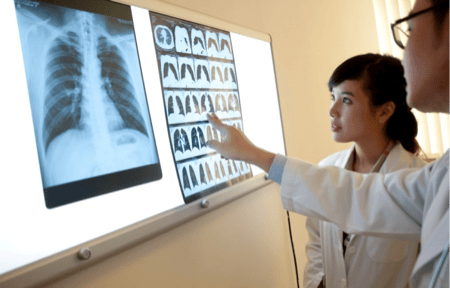
4. Prevention of bacterial pneumonia
In order not to get bacterial pneumonia, you should first prevent the disease through living habits such as:Keep the environment and home clean, fight colds Limit contact with sick people with symptoms signs of bacterial and viral infections Improve the body's resistance, especially for children and the elderly: Stay away from tobacco smoke, pipe tobacco, alcohol, beer; flu vaccination; eat properly and exercise regularly to strengthen physical strength; Drink lots of filtered water, drink more orange and lemon juice or take vitamin C supplements to improve the body's resistance. Wash your hands often to avoid spreading the disease; Drop physiological saline and gargle with salt water. Keep head, neck, chest warm in cold, rainy, stormy season. Note that the baby should drink a lot of water or encourage the baby to breastfeed more. This is very important because children with pneumonia need to be given plenty of water to thin the phlegm, soothe the throat, relieve coughs and avoid dehydration. If not monitored and treated promptly, in some cases atypical pneumonia can lead to dangerous pneumonia complications.
Please dial HOTLINE for more information or register for an appointment HERE. Download MyVinmec app to make appointments faster and to manage your bookings easily.





